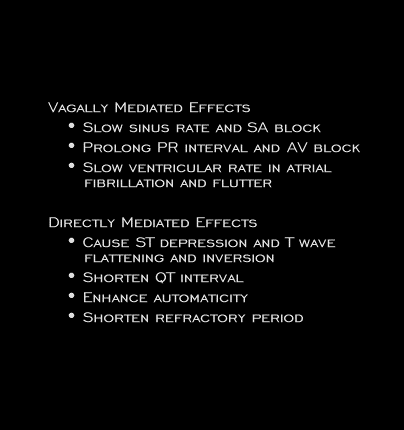
The effects of enhanced vagal stimulation are to slow sinus rate, to slow sino-atrial (SA) conduction leading to the development of SA block and to slow atrio-ventricular (AV) nodal conduction leading to the development of AV block. Inhibition of the Na/K pump leads to a decrease in intracelluar potassium and an increase in intracellular sodium. This, in turn, promotes an increase in intracellular calcium via the Na/Ca exchange mechanism. These effects result in enhanced contractility, shortening of the action potential plateau, which causes shortening of the refractory period, and enhanced automaticity.
